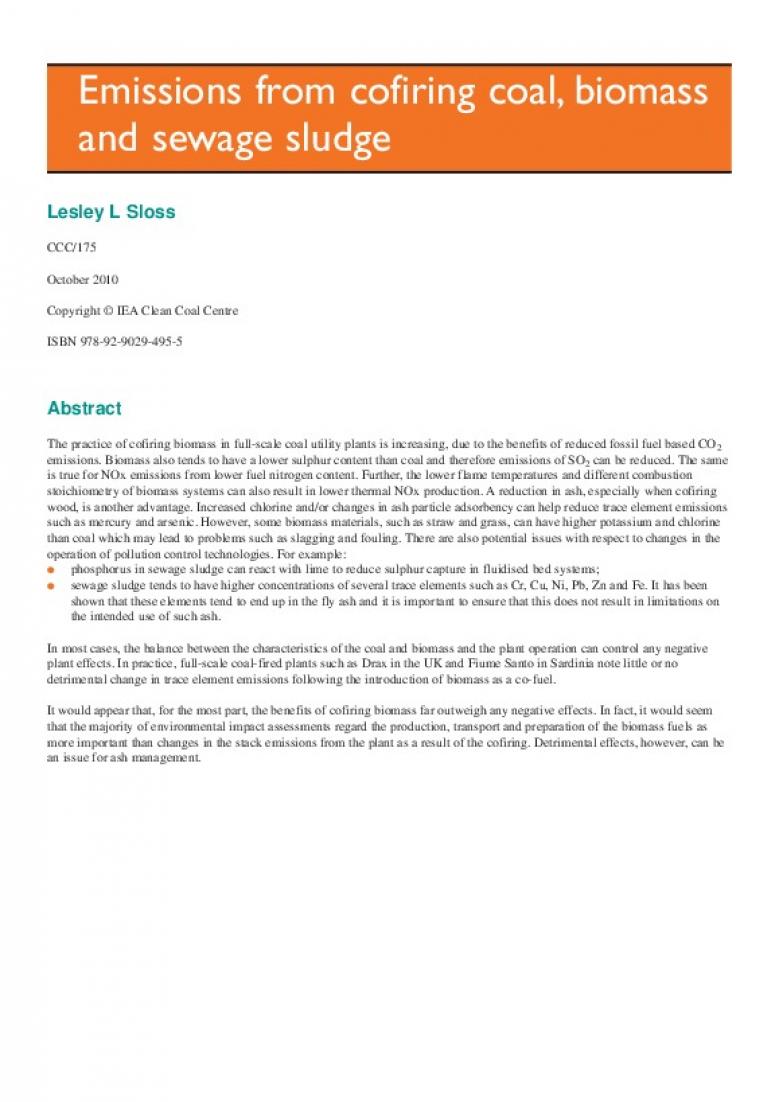CCC/175
October 2010
Copyright © IEA Clean Coal Centre
ISBN 978-92-9029-495-5
Abstract
The practice of cofiring biomass in full-scale coal utility plants is increasing, due to the benefits of reduced fossil fuel based CO2
emissions. Biomass also tends to have a lower sulphur content than coal and therefore emissions of SO2 can be reduced. The same
is true for NOx emissions from lower fuel nitrogen content. Further, the lower flame temperatures and different combustion
stoichiometry of biomass systems can also result in lower thermal NOx production. A reduction in ash, especially when cofiring
wood, is another advantage. Increased chlorine and/or changes in ash particle adsorbency can help reduce trace element emissions
such as mercury and arsenic. However, some biomass materials, such as straw and grass, can have higher potassium and chlorine
than coal which may lead to problems such as slagging and fouling. There are also potential issues with respect to changes in the
operation of pollution control technologies. For example:
phosphorus in sewage sludge can react with lime to reduce sulphur capture in fluidised bed systems;
sewage sludge tends to have higher concentrations of several trace elements such as Cr, Cu, Ni, Pb, Zn and Fe. It has been
shown that these elements tend to end up in the fly ash and it is important to ensure that this does not result in limitations on
the intended use of such ash.
In most cases, the balance between the characteristics of the coal and biomass and the plant operation can control any negative
plant effects. In practice, full-scale coal-fired plants such as Drax in the UK and Fiume Santo in Sardinia note little or no
detrimental change in trace element emissions following the introduction of biomass as a co-fuel.
It would appear that, for the most part, the benefits of cofiring biomass far outweigh any negative effects. In fact, it would seem
that the majority of environmental impact assessments regard the production, transport and preparation of the biomass fuels as
more important than changes in the stack emissions from the plant as a result of the cofiring. Detrimental effects, however, can be
an issue for ash management.
| Attachment | Size |
|---|---|
| 692.01 KB |


